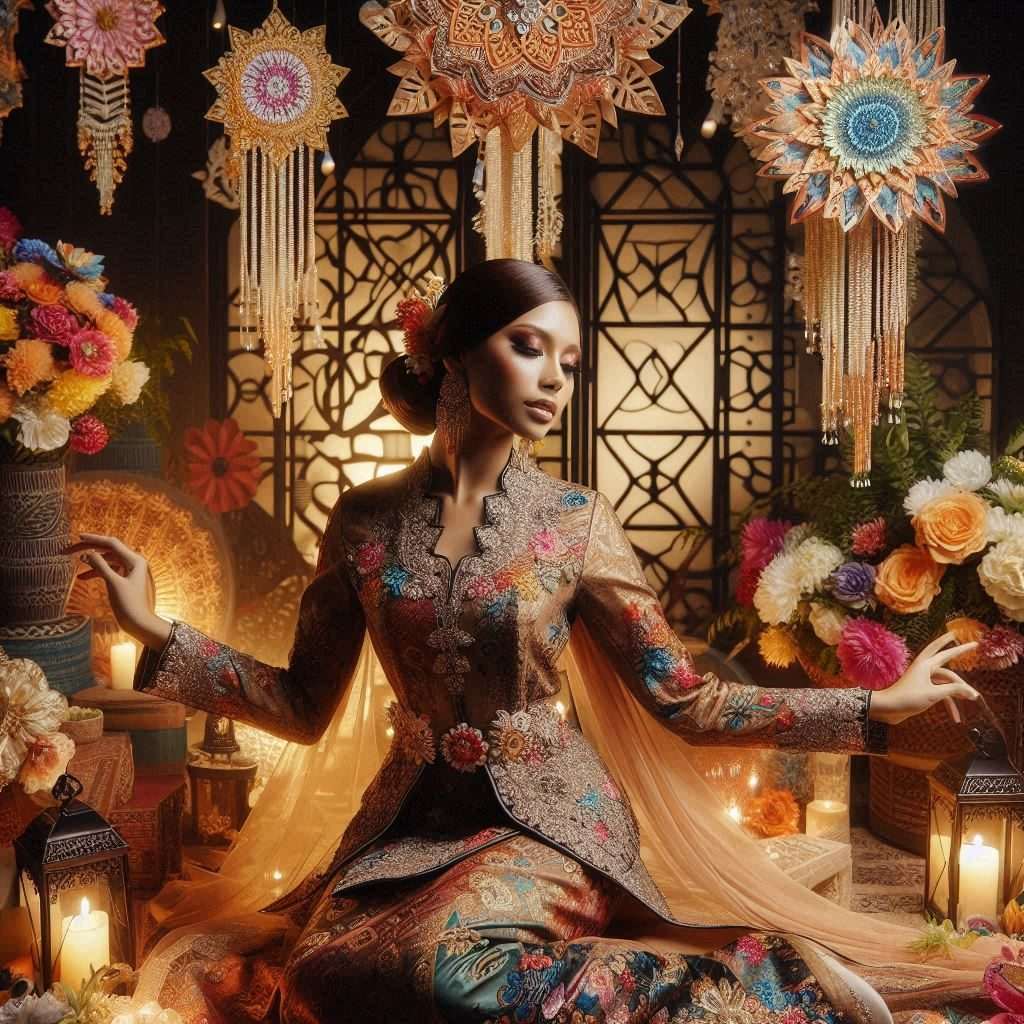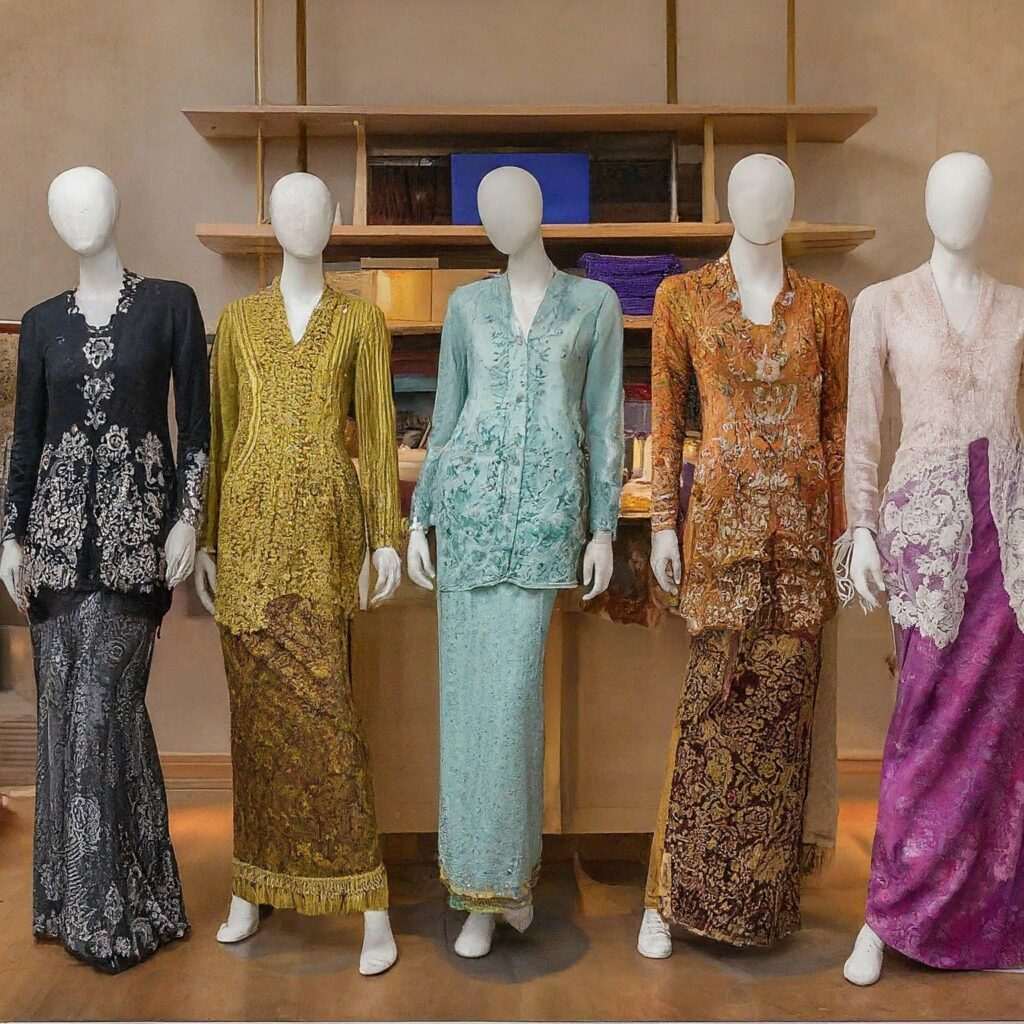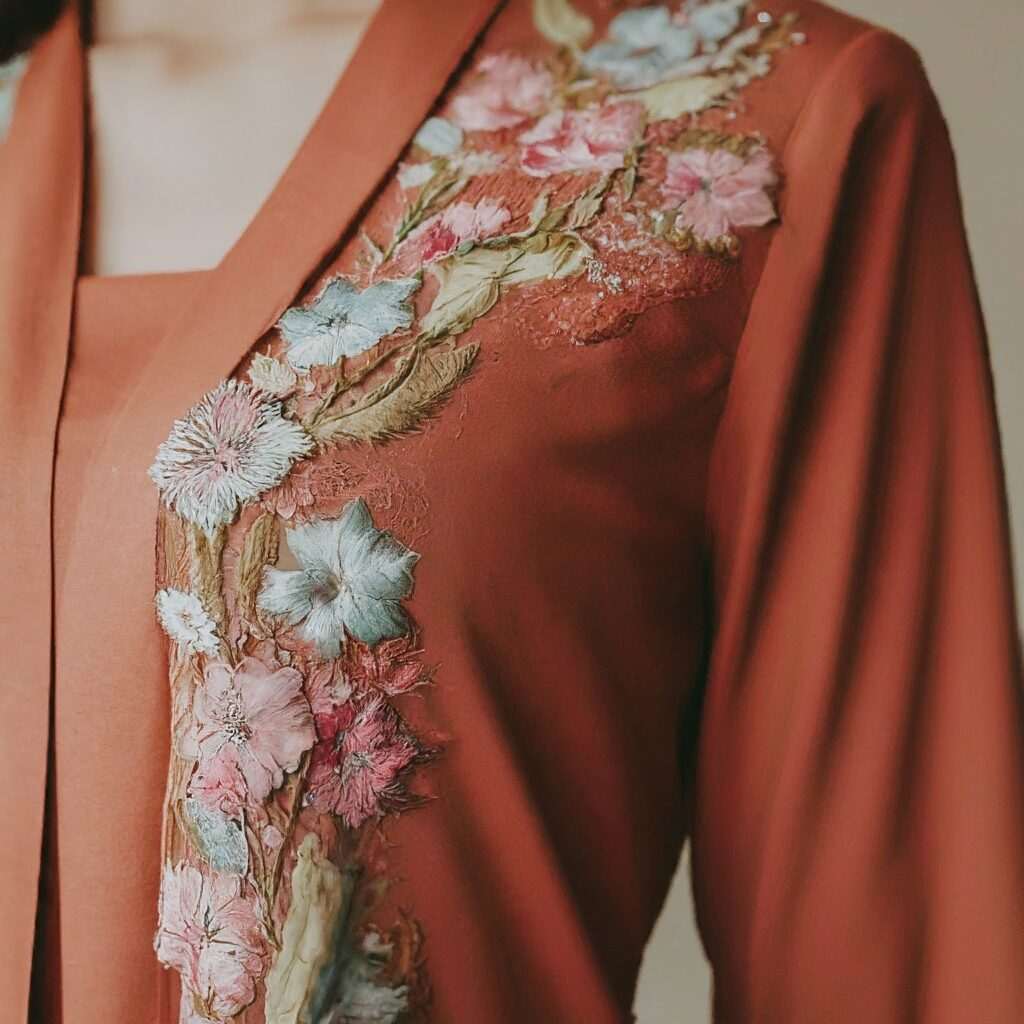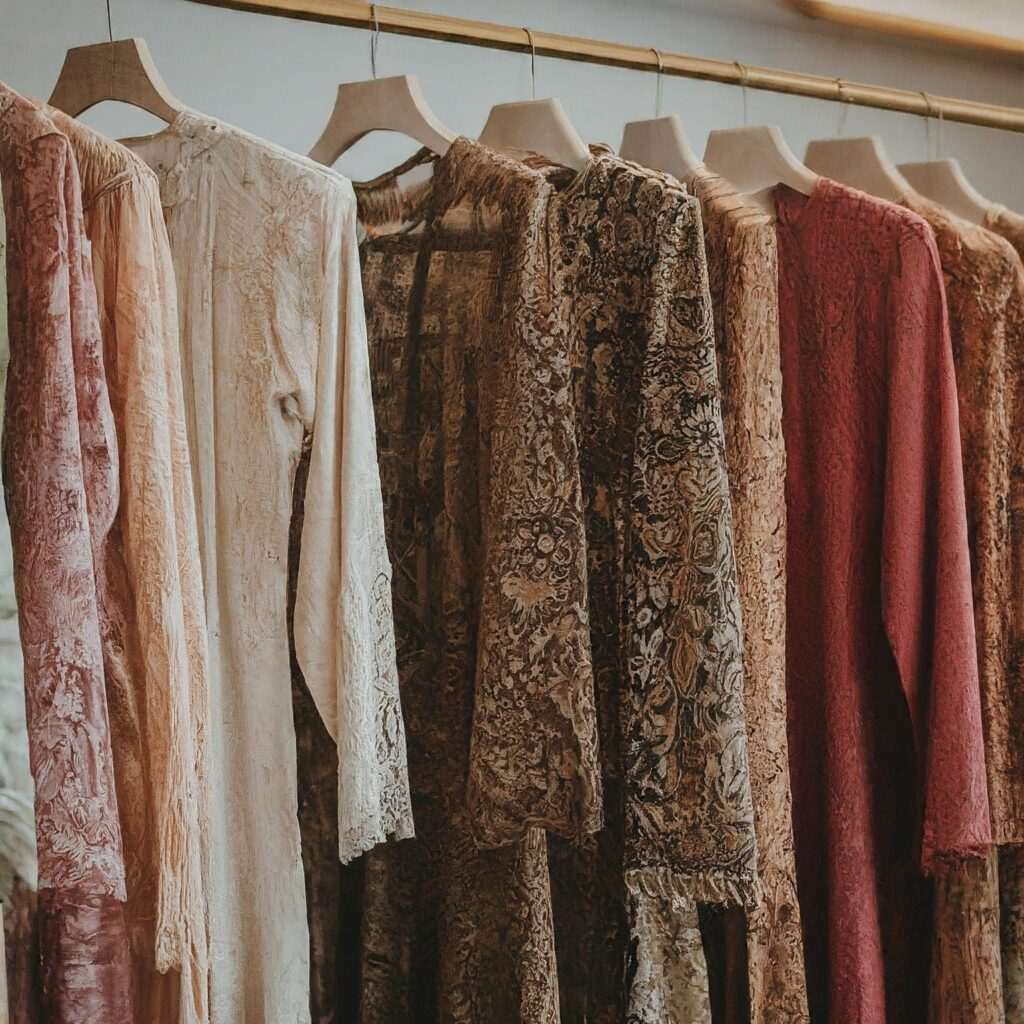Table of Contents

Malaysia, a vibrant tapestry of cultures and traditions, boasts a unique and captivating attire: the baju kebaya. This elegant garment, more than just clothing, embodies the nation’s rich heritage and the grace of its women. Let’s embark on a journey to explore the alluring world of the baju kebaya Malaysia, unraveling its history, diverse styles, and significance in Malaysian culture.
A Glimpse into the History of Baju Kebaya Malaysia
The kebaya’s origins can be traced back centuries, with influences from China, Portugal, and the Indian subcontinent. Early versions were loose-fitting garments, often worn with a sarong. Over time, the kebaya evolved, incorporating elements from each culture. The Chinese influence is evident in the use of mandarin collars and intricate embroidery, while the Portuguese introduced lace and beadwork. Indian craftsmanship is reflected in the vibrant colors and rich fabrics.
The Allure of Fabrics: From Batik to Songket
The essence of the baju kebaya lies not only in its design but also in the exquisite fabrics used. Here are some of the most popular choices:
- Batik: This age-old technique involves creating intricate patterns by waxing and dyeing fabric. Batik kebayas exude a sense of artistry and tradition.
- Songket: Woven with gold or silver threads, songket kebayas are the epitome of luxury and elegance. Often reserved for special occasions, they radiate grandeur.
- Silk: With its smooth texture and luxurious drape, silk lends a touch of sophistication to the kebaya.
- Cotton: A comfortable and versatile choice, cotton kebayas are perfect for everyday wear or warmer climates.
Embracing Diversity: The Many Styles of Baju Kebaya Malaysia

The beauty of the baju kebaya lies in its regional variations. Each state in Malaysia boasts its unique style, reflecting local traditions and aesthetics. Let’s delve into some of the most prominent regional styles:
- Kebaya Labuh (Long Kebaya): This classic style features a long, flowing silhouette, reaching the knees or ankles. It exudes a sense of elegance and formality.
- Kebaya Pendek (Short Kebaya): A more modern interpretation, the kebaya pendek reaches the hips or mid-thigh. Perfect for a contemporary look, it offers greater flexibility in movement.
- Kebaya Nyonya: Hailing from the Peranakan culture, the kebaya nyonya is known for its bold colors, intricate beadwork, and high collars. It’s a vibrant celebration of heritage.
- Kebaya Sabah: This style from Sabah incorporates elements from indigenous communities. Featuring geometric patterns and vibrant colors, it’s a unique representation of local traditions.
- Kebaya Sarawak: Characterized by its “peplums” (layered flaps at the waist), the kebaya sarawak adds a touch of flair and volume to the outfit.
Beyond the Kebaya: Completing the Look
The baju kebaya is often paired with a sarong, a long piece of fabric wrapped around the waist. The sarong’s color and pattern can complement or contrast the kebaya, creating a visually stunning ensemble. Additionally, intricate accessories like brooches, bangles, and scarves elevate the look, adding a touch of personal style.
The Baju Kebaya: More Than Just an Attire
The baju kebaya transcends the realm of mere clothing. It serves as a powerful symbol of Malaysian culture, heritage, and national identity. Here’s why the baju kebaya holds such significance:
- A Celebration of Femininity: The kebaya’s graceful silhouette accentuates the wearer’s femininity and elegance. It’s a garment that empowers women to embrace their beauty and cultural identity.
- A Mark of Respect: Worn during special occasions like weddings, religious festivals, and cultural events, the kebaya signifies respect for tradition and heritage.
- A Bridge Between Generations: Passed down through families as heirlooms, the kebaya connects women across generations, fostering a sense of cultural continuity.
Wearing the Baju Kebaya: Modern Interpretations

The baju kebaya has successfully adapted to the evolving times. Modern designers are reinterpreting traditional styles with contemporary cuts, fabrics, and embellishments. Here are some examples:
- Modern Silhouettes: Kebayas are now available in a wider range of silhouettes, from form-fitting to flowy, catering to diverse preferences.
- Fusion of Styles: Modern designs often blend elements from different regional styles, creating unique and eye-catching pieces.
- Sustainable Fabrics: Eco-conscious designers are utilizing sustainable fabrics like organic cotton and recycled materials to create environmentally friendly kebayas.
Where to Find the Perfect Baju Kebaya Malaysia
Finding the perfect baju kebaya is a delightful experience in Malaysia. Here are some options to explore:
- Traditional Markets: Bustling with vibrant colors and local vendors, traditional markets like Kuala Lumpur’s Pasar Bukit Bintang or Penang’s Chowrasta Market offer a wide variety of kebayas at affordable prices. Be prepared to bargain for the best deals.
- Boutiques and Specialty Shops: Upscale boutiques and specialty shops in major cities like Kuala Lumpur and Penang cater to a more discerning clientele. Here, you’ll find high-quality, designer kebayas made with luxurious fabrics and intricate craftsmanship.
- Online Retailers: The internet provides a convenient platform for browsing and purchasing kebayas. Numerous online retailers offer a vast selection of styles, fabrics, and price points.
Tips for Choosing the Right Baju Kebaya
Choosing the right baju kebaya can be overwhelming with so many options. Here are some tips to guide you:
- Consider the Occasion: Formal occasions call for classic styles like the kebaya labuh in luxurious fabrics like songket. For a more casual setting, a kebaya pendek in cotton or silk would be suitable.
- Embrace Your Body Type: The kebaya’s beauty lies in its ability to flatter various body types. Opt for styles that accentuate your strengths and minimize areas you’d like to downplay.
- Comfort is Key: The kebaya should feel comfortable and allow for movement. Choose fabrics that breathe well and fit you appropriately.
- Don’t Be Afraid of Color: Baju kebayas come in a stunning array of colors. Select a color that complements your skin tone and personal style.
The Future of Baju Kebaya Malaysia

The future of the baju kebaya Malaysia appears bright. Here’s why:
- Evolving Design: With the influx of modern interpretations, the kebaya is constantly evolving to cater to contemporary tastes and preferences. This ensures its relevance for future generations.
- Cultural Significance: The deep-rooted cultural significance of the baju kebaya guarantees its continued presence in Malaysian society. It remains a cherished symbol of heritage and identity.
- Global Recognition: The growing popularity of Malaysian culture is putting the baju kebaya in the spotlight. This international recognition is likely to propel its popularity further.
Conclusion
The baju kebaya Malaysia is more than just a garment; it’s a cultural treasure trove woven with rich history, diverse styles, and profound significance. It embodies the grace, elegance, and cultural heritage of Malaysian women. Whether worn for a special occasion or a casual outing, the baju kebaya continues to captivate hearts and inspire creativity.
FAQs
-
What are some popular accessories to wear with a baju kebaya?
A variety of accessories complement the baju kebaya, including brooches, bangles, scarves, and traditional headpieces like the songkok for men and the tanjak for women.
-
How to care for a baju kebaya?
The care instructions for a baju kebaya depend on the fabric. Delicate fabrics like silk and songket require special handling, while cotton kebayas can be machine-washed with gentle settings. Always refer to the care label for specific instructions.
-
Can men wear baju kebaya?
While the baju kebaya is traditionally considered women’s attire, some regional variations like the baju lelaki (men’s kebaya) in Kelantan showcase a similar silhouette tailored for men.
-
Is it appropriate for non-Malaysians to wear a baju kebaya?
Absolutely! The baju kebaya is a beautiful expression of Malaysian culture, and anyone can appreciate its elegance by wearing it respectfully.
-
Where can I learn more about the history of baju kebaya?
Several museums in Malaysia, like the National Textile Museum in Kuala Lumpur, house exhibits showcasing the evolution of the baju kebaya and its significance in Malaysian culture.